Is Invisalign better than braces? If you are interested in straightening your teeth, you’ve probably wondered about this question. Choosing between Invisalign or braces can be confusing, but we’ve put created a simple guide to Invisalign to help you make an informed choice.
What Is Invisalign?
Invisalign is an effective, popular cosmetic dentistry treatment that uses custom-created clear aligners that shift your teeth into better alignment a little at a time.
The system features clear, barely noticeable trays made in a lab based on 3D moulds of your teeth and mouth.
What Are Braces?
Traditional braces have been used for decades to straighten teeth and address a wide range of orthodontic issues. They are well known for being incredibly effective and versatile.
Braces involve wires and metal brackets that are bonded to teeth and tightened every few weeks. Over time, teeth are gradually shifted by the wires and moved into their desired position.
How Are Braces and Invisalign Similar?
Braces and Invisalign can both effectively treat a wide range of orthodontic issues, such as misaligned teeth, space between teeth, and certain bite issues. They both work by slowly shifting the teeth, little by little, into the proper position.
Whether you choose Invisalign or braces, you will experience some degree of discomfort when switching to a new set of aligners or having the wires tightened.
After completing treatment using braces or Invisalign, patients will need to wear retainers to maintain their results.
Is Invisalign Better than Braces?
Whether Invisalign is better than braces will depend on your personal preference, tooth alignment, and oral health goals. However, Invisalign does offer numerous advantages that have made aligners the preferred treatment for many patients.
Here is a look at the pros and cons of braces and Invisalign.
Pros of Invisalign
Invisalign offers quite a few advantages when compared to metal braces.
Here are the pros of Invisalign treatment include:
-
Invisible – Treatment with Invisalign is incredibly discrete thanks to the clear plastic aligners used. As opposed to the metal brackets of braces, treatment with Invisalign is almost invisible. People probably won’t even notice you have aligners in unless you tell them.
-
Eat Easily – Metal brackets and wires can be damaged by hard or sticky foods, meaning brace wearers often have to give up foods such as popcorn, caramels, gum, and more.
With Invisalign, you can still eat your favourite foods. As long as you wear your aligners for at least 22 hours every day, you can take them out to eat. This means you can easily enjoy the foods you love without having to worry about chipping a bracket or getting food stuck in a wire
Note: Invisalign patients need to take care to protect their aligners any time they are out of their mouth. If dropped, aligners can be damaged or even lost. Remember to keep them safe, as if they’re left out we have heard stories of pets deciding to try the treatment!
-
Easier Maintenance – Aligner treatment is far more hygienic than braces since you can take the trays out to brush and floss as normal. This makes it easier to maintain good oral health and keep your teeth healthy and bright as you complete your Invisalign treatment. Braces have wires and brackets that are difficult to clean around. There are little crevices that can trap debris and contribute to plaque buildup.
You dentist can also discuss oral hygiene during Invisalign treatment, what to expect, and how to care for the aligners.
-
Faster Appointments – Many of your Invisalign appointments will be fast and straightforward since the majority of the work is done in advance. Your plan is already outlined ahead of time, meaning appointments are a breeze. At appointments, we look at your progress and have you switch to a new set of aligners. Typically, this happens about every two weeks. Appointments for traditional braces that involve tightening wires can take longer, and many patients report it to be more uncomfortable.
-
Improved Comfort – Along with appointments being more comfortable, many users also report the aligners being more comfortable to wear than braces. With a smooth plastic tray compared to the wires and brackets of braces, there’s a good chance you’ll find Invisalign to be the more comfortable option of the two. Invisalign also eliminates the risk of getting poked or scratched cheeks, tongue, or mouth on a sharp wire.
-
Appearance – Its discrete, barely-there appearance may be Invisalign’s biggest advantage. Both adults and teens enjoy the almost invisible treatment that Invisalign trays provide.
-
No Discolouration – When the metal brackets from traditional braces are taken off, some patients find discolouration left behind. This is especially true for coffee or tea drinkers. With Invisalign, you can remove the trays to brush, ensuring that all surfaces are thoroughly cleaned. This greatly reduces the risk of experiencing any discolouration from treatment.
Cons of Invisalign
While Invisalign does offer many advantages compared to metal braces, there are some cons to be aware of.
The biggest concern with Invisalign is discipline. As opposed to braces that are fixed to your teeth, YOU are responsible for ensuring you wear your aligners at least 22 hours a day.
If a patient does not wear the aligners for the allotted time, it can lead to a variety of negative issues that will impact the success of treatment. Wearers who fail to follow the instructions may find they require longer treatment time to achieve their goals or more appointments for treatment.
To be successful with Invisalign, you need to stay disciplined, follow the instructions, maintain good oral hygiene, and attend all your appointments. The good news is that since the aligners are so comfortable and often barely noticeable, most patients find it easy to comply with treatment.
The other possible disadvantage is cost, it’s important to talk to your dentist to see if Invisalign is right for you.
What Are the Pros and Cons of Braces?
Here are the pros of braces:
- There is nothing to remember since you do not need to make sure you are wearing your aligners for the full treatment time every day and there are no trays to take out or put back in
- May be less expensive than Invisalign
- Braces may be the only effective option in difficult orthodontic cases or for particular conditions
What Are the Cons of Braces?
There is no doubt braces are incredibly effective and a tried-and-true method for correcting a vast range of orthodontic issues. However, braces do have quite a few cons to be aware of:
- More Difficult to Maintain Proper Oral Hygiene — Braces are harder to take care of than Invisalign. The brackets and wires can be incredibly difficult to brush and floss around. Food can easily become trapped behind wires or where the brackets attach to teeth.
- Appearance — Even clear braces stand out more than Invisalign. Both adults and teens can end up feeling self-conscious over the appearance of traditional metal braces.
- Trickier to Care For — Wearers need to be extremely careful to avoid any damage to brackets or wires. Damaged brackets and wires can injure your tongue, inner cheeks, or mouth and must be repaired immediately by your dentist. When eating, playing sports, or even just cleaning your teeth, extra concern and care must be used to keep the brackets and wires protected.
- Possible Irritation — Braces involve metal brackets and wires that can irritate the tender inner cheeks.
- Longer Visits – With braces, you’ll need to be seen more often so your wires can be adjusted. These visits will also take longer compared to Invisalign appointments, which usually just involve a quick assessment and a new set of aligners.
- Risk of Discolouration – Braces can put you at risk of discoloured areas once they are removed. If you love tea or coffee or highly pigmented foods, you’ll need to be especially diligent about oral hygiene and concentrate on cleaning the areas where the brackets attach to the teeth.
- Food Considerations – With metal braces, you’ll be saying goodbye to any sticky or hard foods for the duration of your treatment. This means no popcorn, candy, gum, or anything that could risk snapping a wire or breaking a bracket. Sticky, gooey candies are bad enough for regular teeth, but they can be a true nightmare for braces. Sticky foods are prone to getting lodged into the brackets and leading to plaque and decay.
What Oral Problems Can Invisalign Correct?
An evaluation with your dentist is the only way to know if you are a good candidate for Invisalign and if it can effectively address your concerns. However, Invisalign can typically be used to correct:
- Crooked teeth
- Underbite
- Mild to moderate spacing issues (these typically make ideal candidates for Invisalign treatment)
- Gaps in teeth
- Crowded teeth
- Open bite
- Overbite
- Crossbite
Are Straighter Teeth Healthier?
While straight teeth are often thought of as solely a cosmetic issue, having proper tooth alignment can help reduce the risk of oral health complications down the road in some cases.
For instance, gaps in teeth can accumulate food debris that leads to plaque buildup and increases your risk of gum disease and decay. If crooked teeth are bothering you, get in touch with us for a free evaluation.
Is Invisalign Faster Than Braces?
Whether you choose Invisalign or braces, your treatment time will depend entirely on your specific orthodontic issues and desired outcome.
In certain cases, Invisalign treatment may end up being faster than metal braces. In other cases, braces will be the more efficient option.
Typically, treatment with Invisalign takes between 6 to 18 months. The length of treatment time for braces and Invisalign depends entirely on the case and treatment goals.
When you schedule an Invisalign consultation, we can develop a detailed, personalised treatment plan that will outline the exact treatment time you can expect
Is Invisalign Cheaper Than Braces?
In most cases, Invisalign is more expensive than braces. However, many factors, such as insurance coverage and length of treatment time, affect how much Invisalign will cost.
Depending on the case’s complexity, a full Invisalign treatment plan with us typically costs between $3500 to $7500.
For an exact estimate of the cost of Invisalign vs braces, schedule a FREE Invisalign consultation with 123 Dental to learn more. This free consultation, worth $399, includes a 3D scan of your teeth with photos, personalised treatment plan, and a simulation of what your teeth will look like post-Invisalign!
Is Invisalign More Effective Than Braces?
This question depends entirely on your orthodontic situation. In some cases, such as more complicated bite issues, braces are the only way to correct the issue.
We will evaluate your oral health and determine whether Invisalign or braces will be the most effective option for you.
Invisalign vs Braces — Which Is Better for You?
If you need help deciding whether Invisalign or braces are the right choice for you, our team is here to help.
If you like the thought of discrete yet effective orthodontic treatment, ask us about our Invisalign services. We can evaluate your teeth and oral health and let you know if you are a good candidate for Invisalign treatment
Start your Invisalign journey today! Contact us with any questions or to schedule your free consultation to learn more about Invisalign and whether you are an ideal candidate.


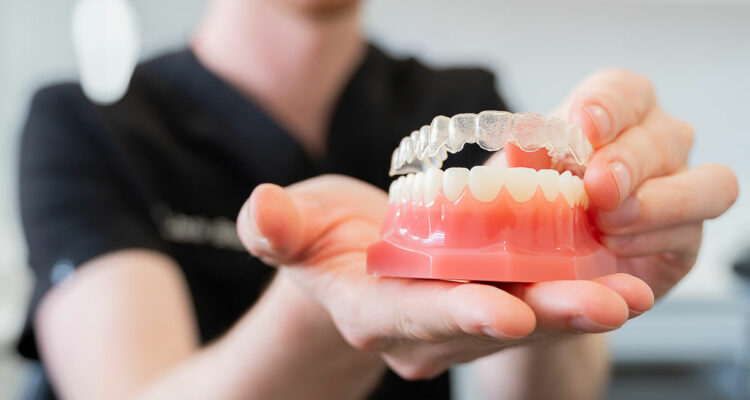
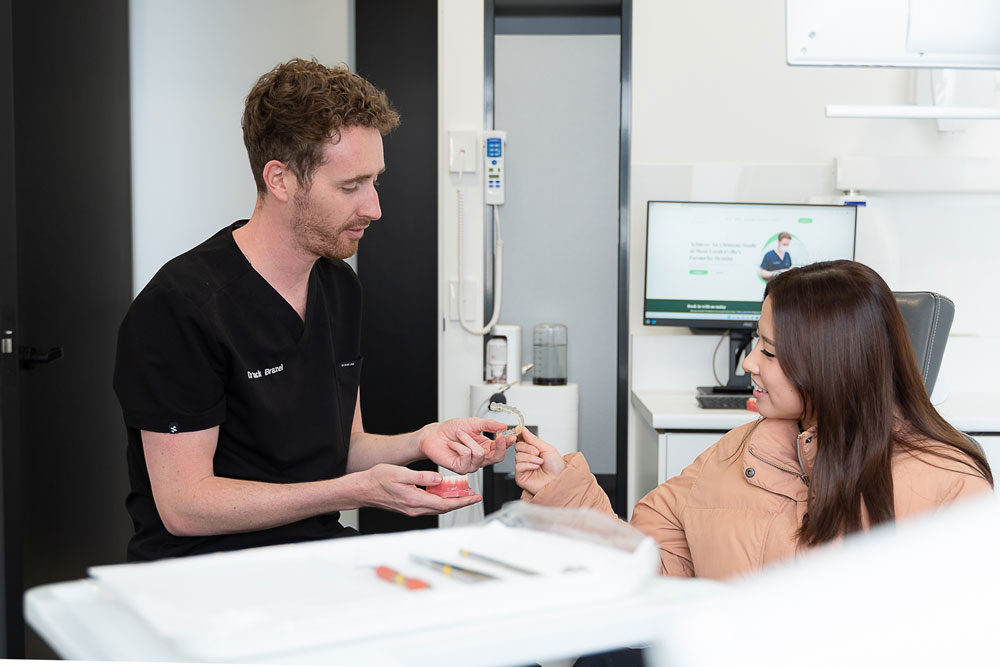

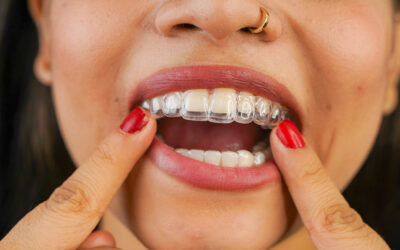
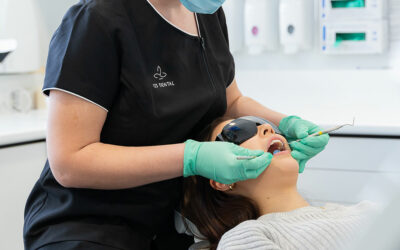
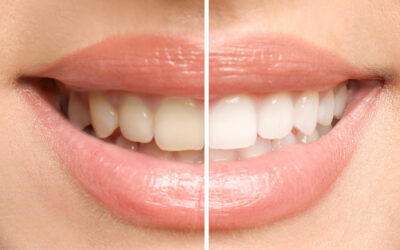
 Hi, you’re chatting with Chloe. If you could please fill out all your details below, I will be in contact with you shortly.
Hi, you’re chatting with Chloe. If you could please fill out all your details below, I will be in contact with you shortly.